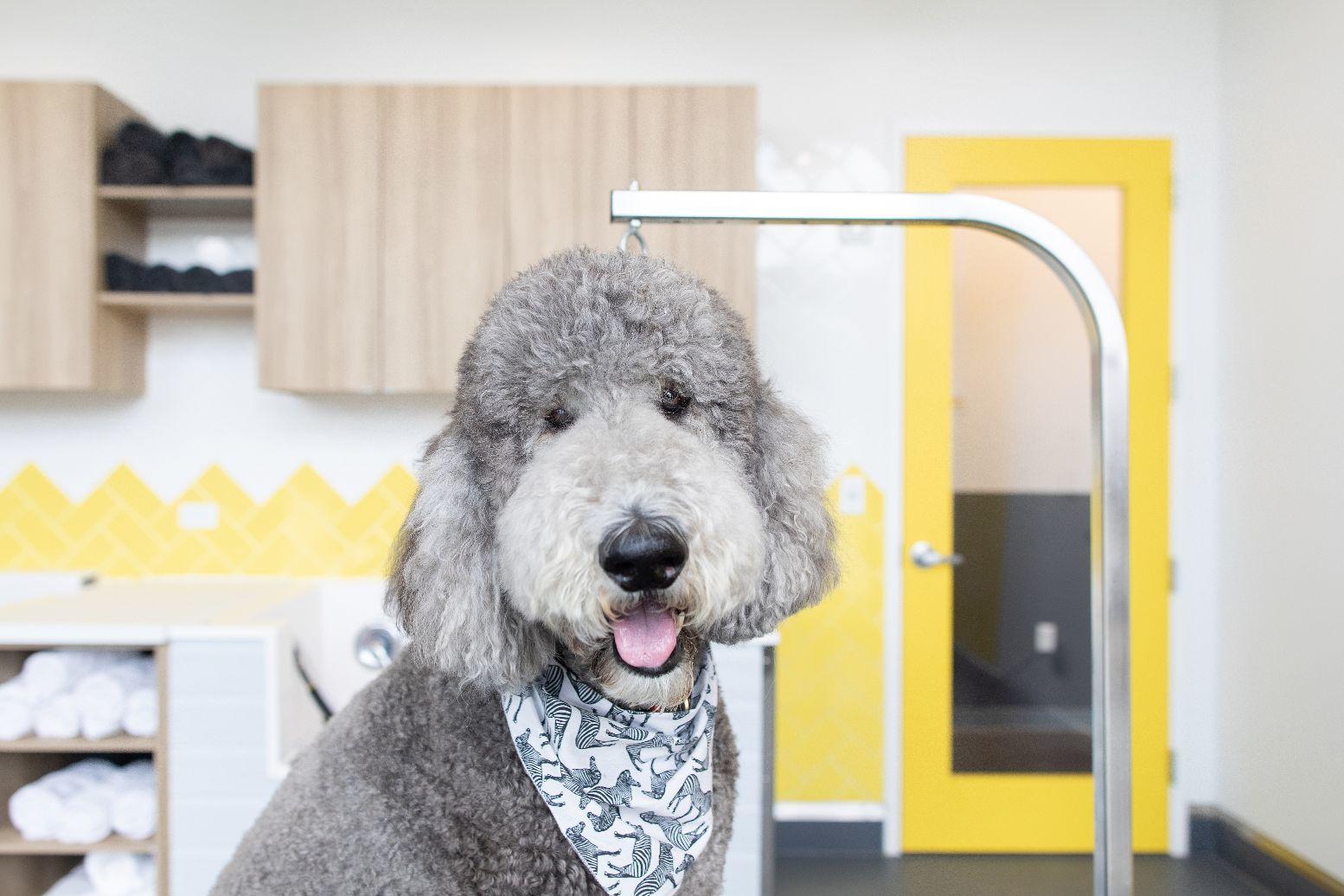As owners, we want the best for our pups. We obsess over food choices, lavish them with toys, and we may even use top-notch grooming and spa services to pamper them. That said, what about their teeth? Dental care is one of the most overlooked aspects of canine grooming, and, consequently, dental disease is the most common preventable disease in dogs.
But how do you even go about keeping your dog’s teeth clean? And how do you brush their teeth in a way that doesn’t result in wrestling match that gets toothpaste all over the house? Read on for our top dog dental care tips that every pet owner should know.
Why Dog Dental Care is Important
Keeping your dog’s teeth clean is much more than a cosmetic concern; it’s an extremely important aspect of their overall health care. The American Veterinary Dental College estimates that most dogs show signs of periodontal disease by age 3. Untreated, dental disease can cause bad breath, painful abscesses, tooth loss, and even increased risk of jaw damage and heart disease.
The best way to avoid these nasty outcomes is to prevent dental disease before it starts. Developing an oral hygiene routine with your pup from an early age will get them comfortable with the process of having their teeth and gums handled and can keep plaque buildup at bay. But it’s never too late to start; older dogs can also learn to tolerate or even enjoy tooth brushing.
Ultimately, you should aim to brush your dog’s teeth every day or every other day, since plaque hardens within 48-72 hours and will then need to be professionally scraped from their teeth.
Choosing the Right Equipment for Cleaning Your Dog’s Teeth
Given that we brush our own teeth several times a day, figuring out how to do that for our dogs should be pretty easy, right? Well, not necessarily. There are some key differences in the toothbrush and toothpaste that will work best for your dog, and there are a few extras that can make the job of smile maintenance easier.
Toothbrush
There are several styles of dog toothbrush on the market, but you’ll generally see two main types: handled brushes and finger brushes. For a handled brush, you want to make sure the handle is long enough to comfortably reach your dog’s back teeth. This is especially important with long-muzzled breeds. The bristles should be soft so they don’t harm the gums, and you may find that an angled head makes it more comfortable to hold the brush while reaching your pup’s back molars.
Finger brushes slip over your fingertip, with soft silicone or plastic bristles to scrub the teeth. These can be a great option for puppies who are just getting used to dental care or for small dogs. However, this style of brush does require sticking some or all of your hand in your dog’s mouth. So, for older dogs not used to dental care or large dogs with bigger mouths, this might not be the best choice—unless you don’t mind being covered in drool or occasionally chomped on.
Toothpaste
There is a wealth of options when it comes to dog toothpaste, but the most important thing to note is that you cannot use human toothpaste for your brushing your dog’s teeth. Toothpaste formulated for human use often contains ingredients that could be toxic to your dog—after all, we spit our toothpaste out and they swallow theirs.
Dog toothpaste comes in a variety of flavors from chicken to peanut butter to minty fresh. You can also find enzyme-enhanced options that use special bacteria-fighting enzymes to keep disease at bay.
The Extras
While a good toothbrush and dog-safe toothpaste are the core of a solid oral hygiene routine, there are a few additional items that can help maintain that pearly white smile:
- Dental Wipes – These soft cloth wipes are soaked with a gentle cleaning solution and are a great way to get surface debris off your dog’s teeth. They won’t be as thorough as a toothbrush but can be helpful between cleanings or with dogs still getting used to dental care.
- Dental Treats/Chews – Made with breath-freshening ingredients and designed to help remove some surface plaque as your dog chews, these treats are likely to be far more appreciated by your pup than a good thorough scrubbing. Just remember, they aren’t a replacement for actual cleaning!
- Dental Toys – Whether made of rubber, nylon, or rope, many toys offer great cleaning benefits. If your dog is a chewer, then choosing a toy with the added benefit of fighting some surface plaque is a smart option.
How to Brush Your Dog’s Teeth
The key to starting a dental care routine is to begin slowly and be patient. Think about your first teeth cleaning done by a dentist. The feeling of having your mouth open for a long time while someone poked around in there took some getting used to, right? Well, the same goes for your pup. You may spread the following steps over several days or weeks. It’s helpful to remind yourself that you shouldn’t expect to get a full cleaning done on the very first try; your goal is to make this a lifelong habit that’s comfortable for you both. So, go slowly and provide your pup with lots of praise along the way!
Find a Comfortable, Quiet Spot
Noise, extra people and pets, and other distractions can make your pup anxious and less inclined to sit still and cooperate. Find an area of your home that is quiet and make sure your pup can sit comfortably.
Help Your Dog Get Used to Having Their Mouth Handled
If you don’t regularly have your hands near/in your dog’s mouth, that can be a strange and new sensation for them. Try gently lifting their muzzle so you can see their teeth. Next try the same thing on the other side of their mouth. Finally, mimic the action of brushing with a finger. Running your finger along the gumline and over their teeth will help prepare your dog for the sensation of the toothbrush. Remember to give them lots of praise during this process.
Familiarize Your Dog with the Tools
Let your dog sniff and inspect the toothbrush and toothpaste. Place a small dab of toothpaste on your finger and let your pup lick it off. Next, you can place a small dab of toothpaste on the toothbrush and let your pup lick it off—this will help them get accustomed to the feeling of the brush against their teeth and tongue.
Start with One Section of the Mouth at a Time
Once your dog is used to having their mouth handled and is comfortable with the tools, you can begin brushing their teeth.
It’s often easiest to start with the front teeth and, if this is tolerated, move along one side towards the back. If at any point, your dog becomes uncomfortable, then it’s a sign you’re moving too quickly. Simply stop and go back to the last step where they felt comfortable, perform that action briefly, and then try to proceed. As noted earlier, it’s very rare to get your entire dog’s mouth brushed in their first session. So, set goals that are reasonable for them and you to make sure the experience isn’t too stressful. This will help build a lifelong habit of good dental health.
Finally, if you’re having a hard time getting your dog comfortable with having their mouth handled or with getting them to sit still and stay calm, our professional training services can assist. We offer in-home training packages and are happy to work with you on specific behaviors and goals, like getting your dog to sit calmly for a teeth-cleaning session. You can also add an à la carte tooth brushing to any of your dog’s grooming appointments if you feel like taking a dental care day off!


